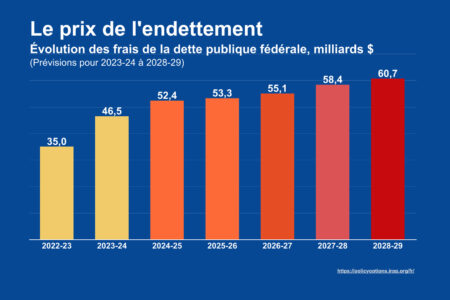
When Finance Minister Chrystia Freeland launched the federal government’s pre-budget consultation in January, she said that “the 2021 budget will be among the most significant of our lifetime.” With over 600,000 Canadians still out of work due to the pandemic and a budget deficit closing in on $400 billion, the upcoming budget is an opportunity for Canada to lay out a growth plan that gets Canadians back to work and businesses investing for the long term. Strong and sustained economic growth will require a rebound in consumer confidence, business investment and export-led growth. Fortunately for Canada, the auto industry is stepping up as a confident investor at a critical time for the economy.
Despite new-vehicle sales declining by a previously unthinkable 20 per cent in 2020, the integrated North American auto industry is continuing to make significant investments in electrification, connected vehicles and autonomous driving. This is all part of a major technological transformation underway in the industry that will generate tremendous economic opportunities for Canada.
Over the past few months alone, Ford, Stellantis (FCA Canada) and General Motors have committed nearly $6 billion to Canada that will create 3,700 direct jobs and tens of thousands throughout the supply chain. The $6 billion in investments will generate many times that value in Canadian sourcing, production, and exports.
This is good news given that manufacturing of vehicles and parts already directly employs more than 125,000 Canadians with another 400,000 in auto retail, dealerships, repair and maintenance.
New auto investment also helps Canada build back better and achieve a carbon-neutral future. Ford, Stellantis and GM have committed to building electric vehicles in Canada, positioning Canada to economically benefit from the technology transition to electrified transportation.
Canada enjoys an incredible economic advantage being part of the integrated North American trading zone for vehicles. It’s one of our economy’s greatest advantages. But we need to be focused and smart if we are to maintain our share of new investments in North America, and the upcoming budget should outline a vision for the industry.
Priority number one is ensuring that Canada remains aligned with the U.S. on vehicle regulations. Maintaining a seat at the North American automotive table requires harmonization with the U.S. across safety, criteria emissions, chemicals management and greenhouse gas regulations. Canada should seize the opportunity now to engage with the new Biden administration on a North American approach to climate change, emissions, and electrification.
Second, Canada should use the upcoming budget to accelerate the turnover of older-technology vehicles on our roads so we can accelerate GHG reductions from the fleet. Introducing a large-scale “cash for clunkers” program in addition to the existing federal incentive for zero emission vehicles would entice consumers to turn in old, high-polluting vehicles for new, safer, more fuel-efficient or zero-emission vehicles.
Canada has a very high proportion of older vehicles on the road today. Thirty-five per cent of the vehicle fleet is 12 years or older, contributing over four times the GHG emissions of new vehicles. Replacing a 20-year-old vehicle with a similar model that has new technology can reduce greenhouse-gas emissions by 30 per cent or more.
Such a program would both stimulate the economy by boosting new vehicles sales and reduce Canada’s GHG emissions. A win-win.
Third, we need to be highly competitive as a preferred destination for global automotive investment. New investments from Ford, Stellantis and GM do not allow us to rest on our laurels. Competition is fierce for job-creating investment, particularly given record unemployment levels around the world as a result of the pandemic.
Since the 1960s, Canada has enjoyed duty-free access to the most integrated and wealthy automotive market in the world. That benefit falls apart when our thicket of automotive rules and regulations across the country fragments in divergent directions.
Staying at the automotive table means Canada needs to get serious about ensuring competitive manufacturing costs, aligning regulations, and improving transportation linkages.
The Ontario government made a good start at tackling seriously uncompetitive electricity costs and removing redundant and inefficient regulations. But there is more to do including the need for a strong, clear commitment to supporting both manufacturing investors and consumers as we navigate the transition to electric vehicles.
Since the 1960s, Canada has enjoyed duty-free access to the most integrated and wealthy automotive market in the world. That benefit falls apart when our thicket of automotive rules and regulations across the country fragments in divergent directions. We see this today with policies on privacy and zero emission vehicles, among others.
The International Monetary Fund (IMF) says Canada’s long list of regulatory distortions hinders labour mobility, limits choice for consumers, fragments markets, stifles competition, and limits the effective scale of production. Removing these internal trade barriers would increase per-capita GDP by almost four per cent and make Canada more attractive for new manufacturing investments.
A seat at the North American table also requires investment in reliable, trade-enabling infrastructure at key ports and border crossings to increase capacity, help exporters get product to market and ensure just-in-time manufacturing actually happens just in time. Recent disruptions to the rail network and at key ports, such as a labour dispute last summer at the Port of Montreal, underline how vulnerable Canada’s trade infrastructure truly is. We need additional infrastructure capacity to ensure that disruptions at a single point along our transportation infrastructure network do not threaten our ability to get product to market. Expediting investments in trade and transportation projects through the National Trade Corridors Fund will help Canada compete in global markets and trade more efficiently.
And Canada must focus on supporting the development of new automotive technologies, not just manufacturing. That means widening our investment attraction efforts to include vehicle assembly and automotive R&D that will drive the vehicles of the future. It’s not an easy balance to maintain but the payoff when Canada gets it right comes in hundreds of thousands of jobs and tens of billions of dollars in manufacturing exports.
The auto industry is going through a massive period of transformation with opportunities abounding for Canada. Outlining a vision for the industry in budget 2021 will jumpstart the economic recovery and help Canada build back better, one vehicle at a time.
Photo: A row of Chevy Bolts in Coquitlam, B.C., July 2020. Shutterstock.com, by CineCam.








